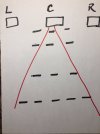ROOSKIE
Major Contributor
Thanks for the review.
Out of curiosity and with respect, why list the PIR 1st.
Out of all the beautiful, wonderful actual measurements that help convey the speakers identity why elevate the PIR? It is not even a measurement, rather a prediction.
It certainly is not granular in anyway and may be as dubious as a type of sound summary, as the fabled "50hrz-20khrz +-3db" statement.
My understanding from Toole and co., is that it is a novelty in that in can generally be predicted with fair accuracy from the available data but that to pay very much attention to it is a mistake and misunderstanding of the best ways to understand what we hear.
- That it is not a summary, rather a side dish, one which only works if the main meal and other accompanying tasties are present.
So anyway listed 1st it gives at the impression that it has very high value to you, does it indeed? Thanks again.
Out of curiosity and with respect, why list the PIR 1st.
Out of all the beautiful, wonderful actual measurements that help convey the speakers identity why elevate the PIR? It is not even a measurement, rather a prediction.
It certainly is not granular in anyway and may be as dubious as a type of sound summary, as the fabled "50hrz-20khrz +-3db" statement.
My understanding from Toole and co., is that it is a novelty in that in can generally be predicted with fair accuracy from the available data but that to pay very much attention to it is a mistake and misunderstanding of the best ways to understand what we hear.
- That it is not a summary, rather a side dish, one which only works if the main meal and other accompanying tasties are present.
So anyway listed 1st it gives at the impression that it has very high value to you, does it indeed? Thanks again.
